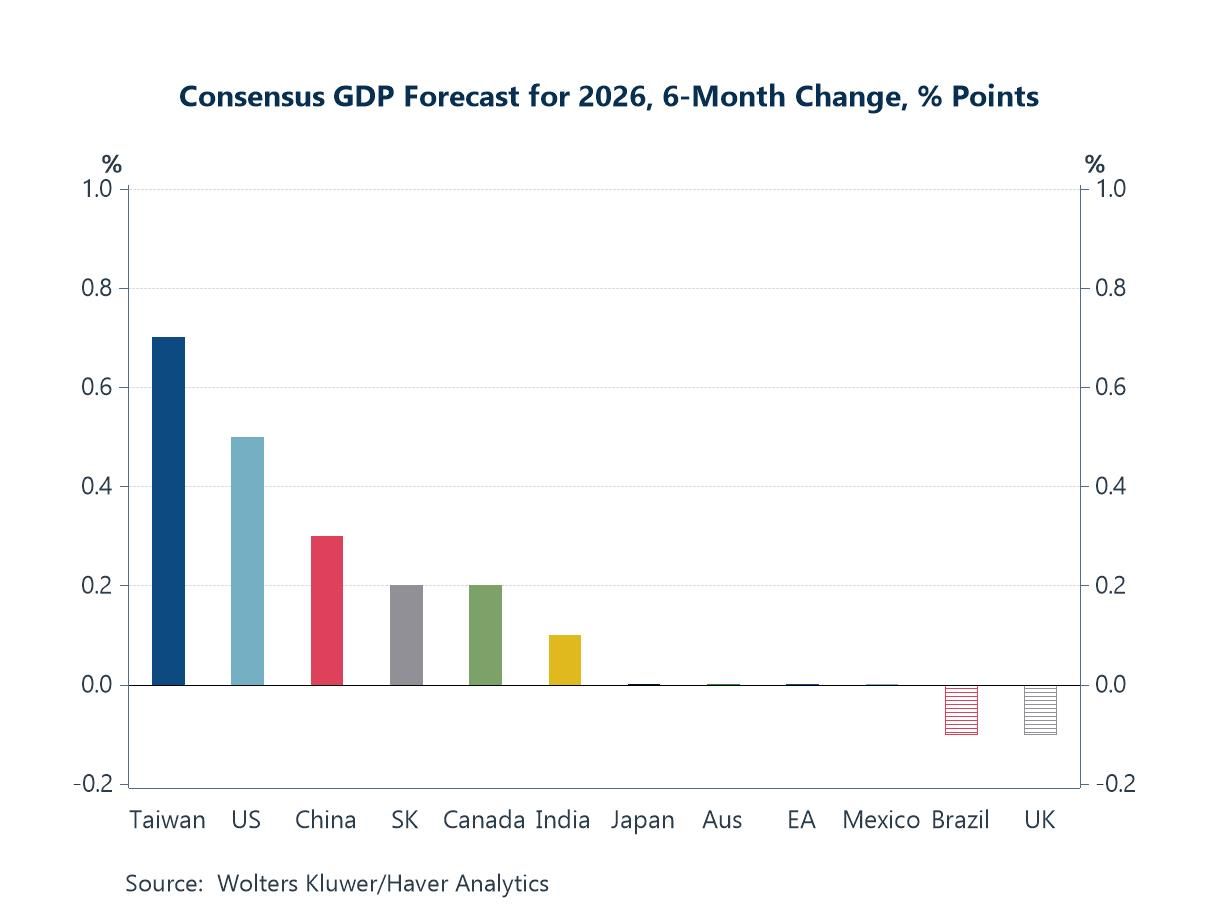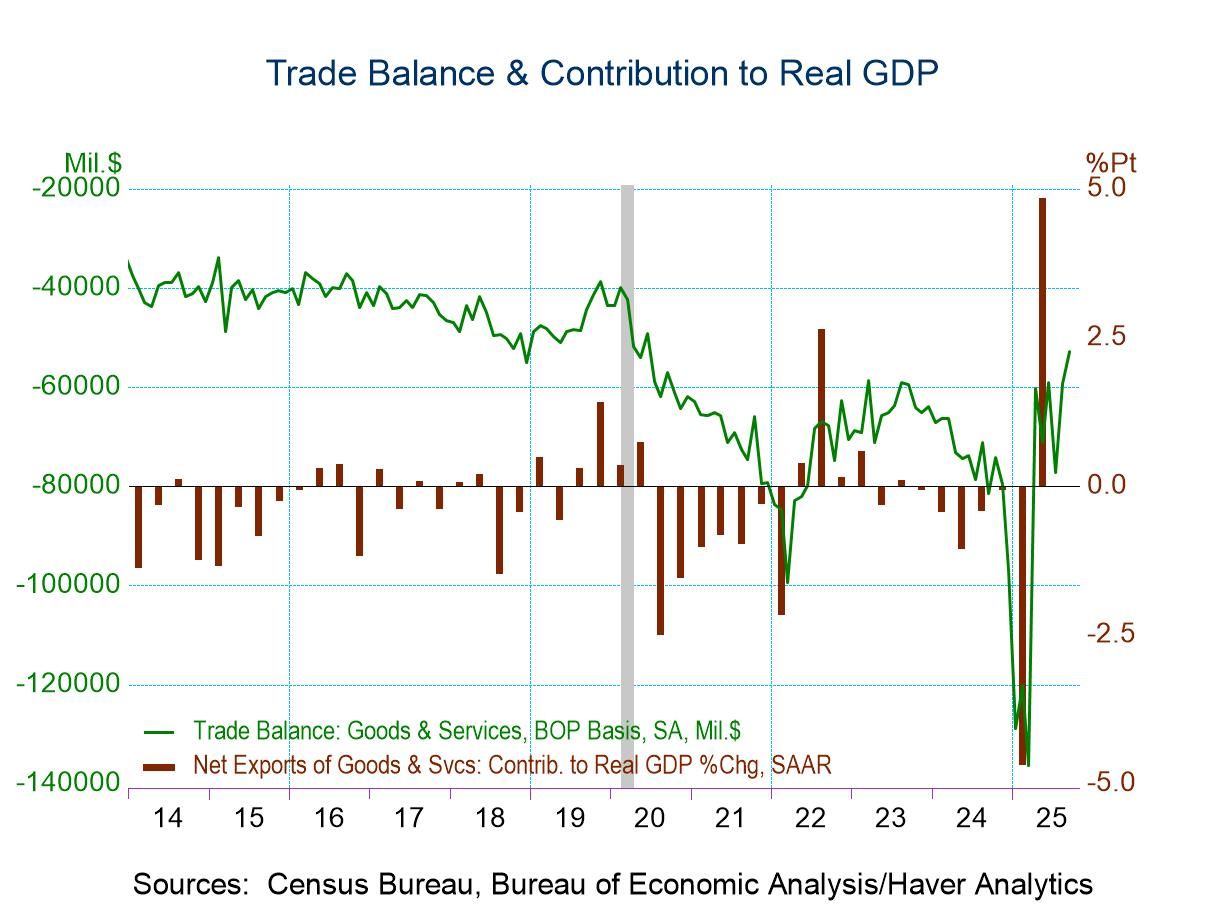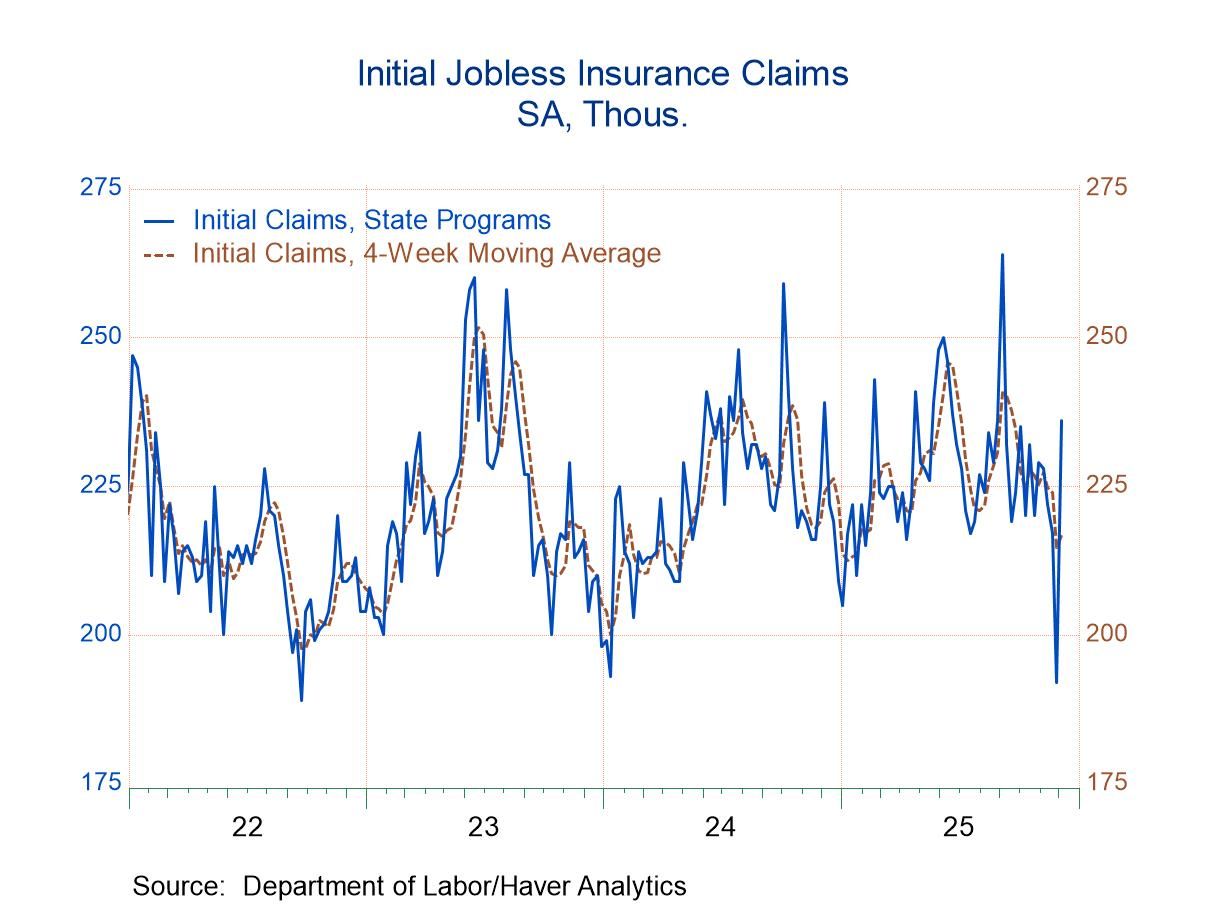Inflation in the UK: A Familiar Picture; Little Decline in Y/Y Core Inflation but a Sharp Drop over 3 Months

The U.K. inflation reported in August paints a familiar picture of the trend for inflation. The CPIH measure rose by 0.4% after falling by 0.1% in July. The core measure excluding food, energy, alcohol, and tobacco was flat in August after rising 0.5% in July. Among the ten major headlines reported for U.K. inflation, the price level change accelerated in only four of them in August compared to July.
Sequential inflation Sequential inflation in the U.K. as measured by the headline rose by 6.3% over 12 months, decelerated to a 4.6% annual rate over 6 months, and decelerated further to a 2% annual rate over 3 months. For the core rate, inflation rose 5.9% over 12 months, accelerated to a 6.2% annual rate over 6 months, and then fell sharply to a 3.2% annual rate over 3 months.
The odd tale of core inflation The tracking of the core inflation rate by 3-month, 6-month, and 12-month calculations is presented in the chart at the top of this report, and it's clear that the 3-month inflation rate, even for the core, has broken sharply lower. For the 6-month rate, there is a more complicated bump-up in inflation before it begins to decline, leaving the 6-month increase slightly higher than its pace over 12 months. The 3-month inflation rate traces out a strange path in which it seems to peak in early-2022 as it proceeds to soften its pace through the end of the year, before spiking to a sharply higher peak rate and then diving sharply and essentially returning the inflation rate for the core back to what had appeared to be the downtrend for the earlier pace of decline before the secondary spike arrived. All of this makes evaluating what's going on in the core much more difficult since the 3-month inflation rate is so different than either the 6-month pace or 12-month pace. Also, because the core has exhibited this extremely rogue behavior, imbuing it with the kind of volatility we normally expect to see in the headline rather than in the core, trusting it becomes more a matter of faith.
The Bank of England The Bank of England must be breathing a sigh of relief, in the wake of these developments. Not only has inflation turned lower but it's done it without having a substantial lift in the unemployment rate. The claimant rate of unemployment, that is more up-to-date, shows that unemployment has moved up to 4% in August from 3.9% in June, not much of an elevation particularly given the deceleration that has occurred in the inflation rate. The headline inflation rate has turned very sharply lower, and the core rate has turned low. The sequential rates of growth, however, are not the whole story. The core rate hasn't moved as much if we simply look at the performance of the year-over-year pace. But the performance in the core over 3 months and 6 months suggests that there's going to be more deceleration in the 12-month pace in the months ahead.
Inflation diffusion The diffusion data that look at the inflation acceleration in one period compared to the previous period show that a year ago the 12-month pace was accelerating in all categories compared to 12-months earlier. Currently the 12-month pace compared to a year ago is accelerating modestly with the diffusion calculation of 54.5; for diffusion the neutral reading is 50%. At that reading, the proportion of categories with inflation accelerating and decelerating is balanced. Over six months, diffusion declines to a 45.5% level; over 3 months, it falls extremely sharply to a 9.1% level. Over 3 months, inflation accelerates only in one category. And that's comparing the 3-month rate to the 6-month rate that already has declined; the acceleration for inflation over 3 months is only from the category ‘education’ where the annualized rate for inflation ‘picks up’ to 3.7% from 3.6%. These are quite impressive trends for the U.K. if the trends have staying power.

Global inflation trends Inflation statistics globally seem to have hit a bit of a soft spot and time will tell if this weaker growth is going to stick. There are still concerns about economic growth although in some quarters we have people peeling back their forecasts for recession in the U.S. as well as in Europe. The U.K. unemployment rate doesn't give us much of a hint of a slowdown, and the release of data on auto registrations shows a bump up and registrations in August compared to July and quite strong increases in registrations in the U.K. over 3 months and 12 months.
Central bankers Central bankers tend to cling to 12-month inflation rates in their analysis because they more reliably and consistently tell how inflation is behaving. Core inflation has some of those same ‘consistency’ properties. However, U.K. core inflation has been wildly volatile over the last year. Even though core inflation of any tenor tends to be better behaved, the performance of the U.K. core is certainly cause for some caution in interpreting what it means. But the inflation report for August still must be considered good news and unexpected news. It should help to feed into a moderated stance for the central bank for the period ahead. Today we're awaiting a decision in the United States from the Federal Reserve which is expected to be ‘on pause.’ The U.K. inflation report today would seem to pave the way for a period of some monetary moderation ahead there too. Central banks seem to have been seeking the most moderate anti-inflation stance that they would be able to strike in this cycle. We are clearly in a different era of monetary policy-making from the late 70s when central bankers were willing to bring out the big guns to stamp out inflation - whatever the cost. We are no longer in a what-ever-the-cost scenario. After what had been a relatively long period of inflation control and containment, the more recent episode of inflation in the wake of Covid is being treated by central banks as something that can be resolved with a lesser degree of restraint even in the face of high oil prices, a war between Russia and Ukraine, and given policy shifts that disrupt normal economic growth in order to implement greener economic policies. In this environment, labor markets globally have become much tighter and yet central banks are of the view that a historically less-stringent monetary policy can, nonetheless, conquer a high inflation rate. Recent events on the inflation front, including this report in the U.K. today, help to support this point of view at least for now… but trends can be fickle as we can see form the path of the U.K. core rate.
Robert Brusca
AuthorMore in Author Profile »Robert A. Brusca is Chief Economist of Fact and Opinion Economics, a consulting firm he founded in Manhattan. He has been an economist on Wall Street for over 25 years. He has visited central banking and large institutional clients in over 30 countries in his career as an economist. Mr. Brusca was a Divisional Research Chief at the Federal Reserve Bank of NY (Chief of the International Financial markets Division), a Fed Watcher at Irving Trust and Chief Economist at Nikko Securities International. He is widely quoted and appears in various media. Mr. Brusca holds an MA and Ph.D. in economics from Michigan State University and a BA in Economics from the University of Michigan. His research pursues his strong interests in non aligned policy economics as well as international economics. FAO Economics’ research targets investors to assist them in making better investment decisions in stocks, bonds and in a variety of international assets. The company does not manage money and has no conflicts in giving economic advice.





 Global
Global
